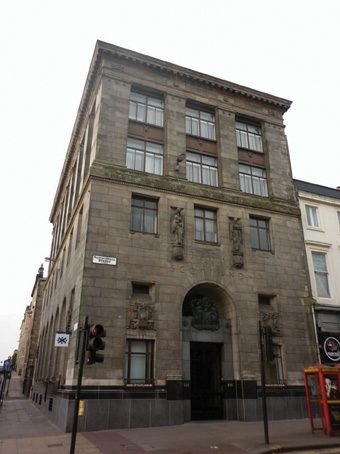Secured by Design was stung into a defence of itselt in a response to a Guardian article, ‘Fortress Britain: high security, insecurity and the challenge of preventing harm’ by Anna Minton and Jody Aked on October 30.
Alan McInnes, Director, ACPO Secured by Design wrote, on the SBD website and among the reader comment part of the Guardian website:
The Secured by Design (SBD) certification is awarded when homes and buildings meet a minimum security standard. It does not, and never has, required gated communities, small windows, reinforced steel doors or metal style roofs. Security has become a factor in planning because of high levels of crime, inadequate, low grade security fittings by builders in past years and the Crime and Disorder Act [1998] which logically required public authorities and police to have crime prevention on their agenda for the benefit of the whole community. SBD is only one of several strategies, including social and community interventions that are supported by these agencies.
The report implies an alliance between SBD, the security industry and insurers. The police specialists in each force spend their time advising architects, builders and members of the public about security methods and the principles of designing out crime. This is a free service. The research and publications that support the SBD project are paid for by fees raised from security companies that make security products of all types, not just for construction, and which SBD can say are tested to show an effective crime prevention value. The insurers have no part to play in this. Importantly, none of this falls on the public purse, it is self financing.
SBD does not require that the tested doors and windows are supplied by the firms which help finance the project. A tested door relies on the strength and technology inherent in the design structure and so without checking for the BS:PAS24 Kitemark it looks no different from an untested door or window. SBD assists consumer and specifier choice and helps people to determine what works, without them needing to be a security expert.
What Anna takes issue with is not SBD but design concepts of particular architects. The influence of SBD on architects’ designs goes as far as putting windows in graffiti prone blank end-walls to assist residents view, the planning and lighting of footpaths and car parking residents will use as opposed to creating a crime risk which often leads to residents parking on pavements outside their home.
She has a fixation that some super-SBD model is applied to poor areas but in the same breath complains SBD is applied blanket style. Aside from SBD, there is much research and policy on crime reduction and all propose that local crime risks and community circumstances and views are taken into account. Many SBD estates are mixed development and the social housing elements certainly do not stand out as ghettos. The only gates that SBD requires are for those giving access to back gardens to be secured. Gated communities are usually put in place by the ultra-rich and their architects who are setting out to achieve lifestyle rather than basic security. SBD does not ask for this and I suspect the example Anna mentions related to high risk city car parking rather than the whole community.
SBD recommends concierge entrances, caretakers and ongoing community management for multi-occupancy buildings. But, unlike Anna, we recognise that economics and the vagaries of training and 24 hour cover mitigate against this and we ask for access control on the main entrance with a camera monitor link to each flat so residents can choose who enters when the entrance is unattended. A reasonable solution given the fear strangers can cause. CCTV is not a requirement, but where there is a specific high risk, such as underground parking, it must be monitored.
So let us cut to the chase, SBD is not about many of the complaints posed by Anna Minton. It is about reducing crime and the fear of crime through a blend of design and realistic physical security. There are many thousands of homes benefiting from SBD. Independent research in cities and towns around the UK has shown that SBD properties suffer 50 per cent less burglary crime – just upgrading the doors in Glasgow social housing reduced burglary by 20pc. Car related crime can fall by 25pc and surveys of residents, many of whom have not heard of SBD, report feeling safer in their homes and community. The recent Future Homes Commission report, Building Homes and Communities Britain Needs, states 43pc of people view security as the most important aspect of homes, showing that inherent security is a priority for many.
All the SBD guides and the supporting research papers are available free at http://www.securedbydesign.com/professionals/publications.aspx
Anna Minton began her article with a housing estate in east London, which had a Secured by Design (SBD) award. The housing on the gated estate had small windows, reinforced steel doors and grey, aluminium, military-style roofs. “The overall effect was oppressive.”
High levels of security have come to characterise our public buildings. This is because security has become a prerequisite of planning permission as a result of SBD, which is a design policy that has the blessing of the police. Administered by the Association of Chief Police Officers, SBD is funded by the 480 security companies that sell the goods needed to meet the required standards. The unintended effects that this approach has had on fear and trust in communities are the subject of my forthcoming report, Fortress Britain, from the New Economics Foundation think-tank.
This is a development of her inquiry into British public space being privatised, such as the Olympic Park at Stratford in east London, a book titled Ground Control : Fear and happiness in the 21st century city. For background visit –
http://www.annaminton.com/Ground_Control.htm
And for the Guardian article in full visit –
http://www.guardian.co.uk/society/2012/oct/30/cctv-increases-peoples-sense-anxiety?newsfeed=true
Minton has been awarded a two-year fellowship from the 1851 Royal Commission to research the built environment.










